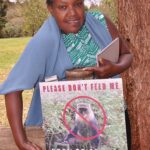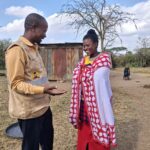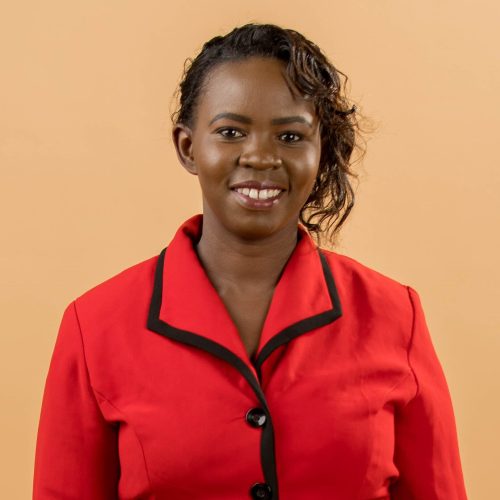
By Tebby Otieno | tebbyotieno62@gmail.com
Crab is probably one of the most delectable dishes you will order when you visit the Dabaso Crab Shack Restaurant. Due to the abundance of seafood options, diners from the Coast region frequently travel to Mida Creek in Watamu, Kilifi County.
This mangrove treetop restaurant is one of the initiatives run by the Dabaso Creek Conservation, well-known for its aquaculture. According to Benjamin Karissa, as part of their conservation programme, the crabs are taken young and fattened inside cages.
Karissa says there is high demand for crabs globally that can only be met through farming rather than wild fishing, which may endanger the species in the ocean.
The crab fattening project began in 2004, and has since gained popularity among locals and visitors. Once at the farm, the crabs ordinarily feed on the ecosystem.
Members of the group catch the crabs themselves or hire fishermen to bring them young ones weighing nearly 300g. They then confine them in cages and feed them with fish trash or gastropods daily to fatten them.
“Moulding means they’re growing, and by three months, a 300g crab will weigh 600g, which is the standard market size,” he says, adding that the crab cages are in mangrove areas.
Crab fattening comes with difficulties though. Mr Karissa says the plastics used to mould the crabs in the cage are not very strong and that as the crabs grow larger, they can cut them and escape. Plastic cages, which are deemed more durable, were introduced recently.
Crabs make up 20 per cent of all marine crustaceans caught, farmed and consumed worldwide, totalling 1.5 million tonnes annually. While crabs produce and carry billions of eggs, Karissa says Kenya has yet to establish a hatchery. This is because crabs require specific equipment, ecological parameters and standard conditions to hatch. According to Karissa, the value of crabs will increase significantly if the hatchery problem is solved.
“One kilogramme of fish will cost Sh400, while that of crab from the farm will be Sh1,000, assuming they are two pieces. More value is now coming from the time we take it to the restaurant’s kitchen because a whole crab is sold at Sh1,800 if it is less than 500g and Sh3,000 for a plate if it is a kilogramme,” Karissa says.
Dabaso Creek Conservation began as a mangrove conservation group before it began crab fattening and the entire seafood business initiatives. When they noticed that the mangrove trees were attracting tourists, they decided to combine conservation with enterprise development. As a result, they now operate this mangrove treetop restaurant and a floating restaurant at the sea selling crabs and seafood, as well as continental food.
According to Karissa, this is a win-win situation for the environment and conservationists as it utilies the ecosystem in a more beneficial way and earns them a living.
“We get crab from the wild, feed it with something that we don’t buy because the fish trash comes from the kitchen as waste. The crabs love it,” he says.
Dabaso Creek Conservation is one of the pioneer community groups that have embraced conservation and also developed self and sustainable enterprise based on the Blue Economy. The group has also started engaging youth in the venture as a succession plan.
Women here however still have difficulty in accessing the sea to catch fish or young crabs. “Before I joined this group, one of the Mijikenda cultures did not allow women to enter the sea or any conservation places. Women did not know the meaning of conservation. So we joined men who started this group because there was the question of gender consideration,” Mercy Karissa said.
She told Sayansi there are now 15 women in the Dabaso Creek Conservation group who also participate in planting and protection of mangroves.
“If we did not participate in this conservation activity, our forests would by now be gone. Before we came here mangrove trees were being cut due to their value. Now there is security and when we see someone destroying our trees we report them to our male group members,” she said.
Mercy, 49, and other Mijikenda women in the group are happy to have equal chances as men in the group. The mother of seven has been working here for at least seven years.
“When a visitor finds me at the farm I can tell them the sex of the crab they are looking at. Before I came here I used to sell fish and vegetables to earn a living. The income was little, as fishing also has its challenges,” she says.
Meanwhile a Blue Empowerment Project is working on climate smart modalities to address barriers faced by fisherwomen in the country’s coastal region.
The project aims to achieve this through adoption of climate-smart integrated multi-trophic aquaculture (IMTA) of seaweed and fish for improved livelihoods and resilience. The initiative brings together leading research organisations such as African Centre of Technology Studies (ACTS), Kenya Research and Development Institute and Kenya Marine Fisheries Research Institute (KMFRI).
According to Dr Linus Kosambo, a senior research scientist in the food technologies research centre from Kenya Industrial Research and Development Institute (KIRDI), the Blue Empowerment Project research will attempt to work with groups to see opportunities for women and the vulnerable, and the empowerment opportunities available.
“Through this new Blue Empowerment project we will look at the the barriers for further development and the opportunities. We’ll also consider technological innovation on how we can improve their technologies for fish and crab farming to ensure they are much more productive and efficient in their production systems,” says Dr Kosambo.
He says Dabaso Creek Conservation group members are self-sustaining and example of how communities can interact with key stakeholders. For instance, he says, the group is partnering with Kenya Wildlife Service, the Forestry Service, and the county government for sustainable conservation and utilisation of the Blue Economy resources.
“We’ll also look at opportunities and business models that can enhance their productivity and profitability. Researchers will start a survey to see what is happening and determine the issues and then design the best intervention pathways to better the lives of this community.
They already own good trajectory in as far as conservation and enterprise development is concerned,” he notes.
Mangrove trees are indigenous and only grow along the shoreline. KFS recognises coastal communities protecting mangroves. Mercelyne Khalumba, in charge of forest plantation management, says such programmes promote ecotourism and encourage conservationists, which earns them income.
“Mangrove trees are important because as they grow they also clean the water as they fix the carbon, also helping in tackling global warming. They grow very fast, which means they are fixing carbon quickly,” she said in an exclusive interview with Sayansi during a science café organized by the Media for Environment, Science, Health and Agriculture at the Kenya Forest Service offices.








